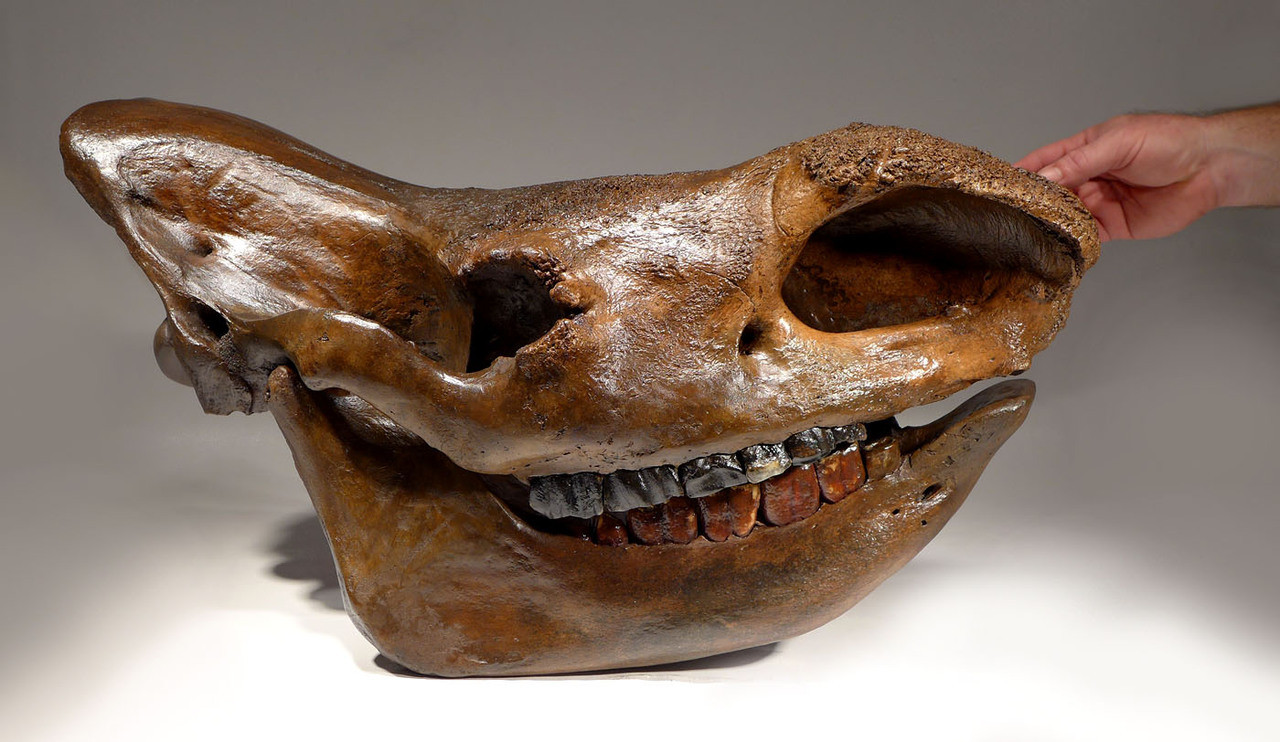Product Description
ID
|
Coelodonta antiquitatis
|
||
FOUND
|
River Gravel Deposits - Germany
|
||
AGE
|
PLEISTOCENE: 120,000 - 20,000 years ago
|
||
SIZE
|
30" long overall
|
||
CONDITION
|
REPAIR AND RESTORATION TO THE
|
||
NOTE
|
EXTREMELY SCARCE WOOLLY RHINO SKULL
|
||
Actual Item - One Only |
|||
CLICK HERE TO LEARN MORE ABOUT THE WOOLLY RHINOCEROS
Found years ago, deep in the river gravels of Germany, we proudly offer this amazing signature specimen. It is a complete skull from one of the most famous beasts of the last Ice Age - the Woolly Rhinoceros. While a fossil Woolly rhino skull from ANY location is rare when found of this level of preservation, finding one from EUROPE, not the Siberian Tundra as most have been found, makes this an especially note-worthy piece. Woolly Rhinoceros skulls from Siberia (Russia) are much more prevalent than European specimens. They are still finding fossil skulls of this quality and completeness in Siberia but no longer in Europe, making this skull considerably more valuable and scarce. Because of this, the prospect for market value appreciation and its investment potential are tremendous. Complete European Woolly Rhino fossil skulls can now only come from old, private collections as this one has.
It has been many years that fossils like this have been discovered in the once productive gravel mine dredges that operated on the rivers of western Europe. Today, the machinery brings up the gravel (and fossils) by suction dredge and all the material is ground up and destroyed before being deposited in the barges. In the past, the dredges operated by bucket so it was possible to find some amazing specimens but this has not been the case for well over a decade as of today. The permanent change in river dredge techology has made these rare fossils even more rare as present-day discoveries like this are impossible
From a recent museum de-accession, this large and impressive specimen is truly a breath-taking display fossil. There is minor repair and restoration to the areas noted above which total approximately 7 - 10% of the overall skull and jaw. The lower jaw is not the original jaw (river gravel fossils are always found as solitary finds, not articulated) but is authentic with restoration noted.
This is a rare, life-time offering and specimens like this can only come from older collections due to the unfortunate change in the destructive machinery used today by which these fossils were once found. The emphasis on the European origin adds to its extreme scarcity.
 US DOLLAR
US DOLLAR
 EURO
EURO
 AUSTRALIAN DOLLAR
AUSTRALIAN DOLLAR
 CANADIAN DOLLAR
CANADIAN DOLLAR
 POUND STERLING
POUND STERLING






















